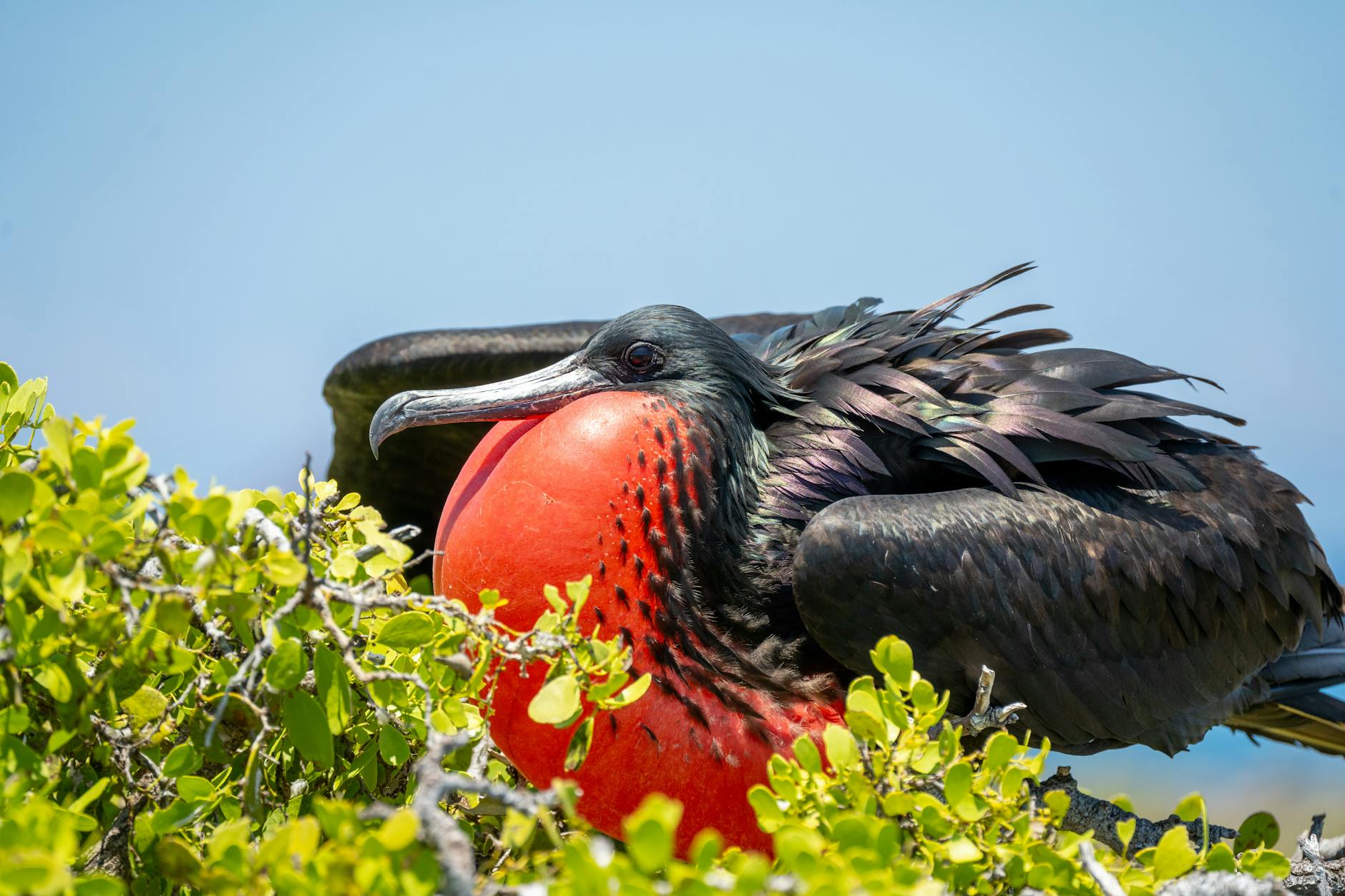
Soaring high above the volcanic landscapes and sparkling waters of the Galapagos, you’ll encounter one of the archipelago’s most distinctive and acrobatic residents: the Frigatebird. With their immense wingspans and striking appearance, especially the males during breeding season, these birds are true masters of the sky and fascinating subjects of observation.
A Silhouette Like No Other
Even from a distance, a Frigatebird is unmistakable. Their long, pointed wings and deeply forked tails create a unique, almost prehistoric silhouette as they glide effortlessly on air currents. They are incredibly lightweight for their size, with the largest wing-to-body weight ratio of any bird, allowing them to remain aloft for astonishingly long periods – sometimes for weeks without landing!
The Magnificent Red Pouch: A Male’s Declaration
The most iconic feature of the male Frigatebird, particularly during the breeding season, is his enormous, inflatable red gular pouch. This vibrant, balloon-like sac, located under his chin, is typically a dull gray or black. But when he’s ready to attract a mate, he inflates it like a giant crimson balloon, often taking up to 20 minutes to fully expand. Perched on a branch with his pouch fully engorged, he’ll shake his head, drum his bill, and call out to passing females, hoping to impress them with his health and vigor (indicated by the size and intensity of the red). It’s an absolutely spectacular sight and a photographer’s dream.
Masters of the Air, Not the Water
Despite being seabirds, Frigatebirds are a bit of an anomaly: they cannot swim and are not waterproof. Their feathers lack the necessary oils found in other seabirds, meaning they would become waterlogged if they landed on the ocean. This crucial detail dictates their hunting strategy and explains why you’ll never see them plunge-diving like a booby.
The Kleptoparasites of the Coast
So, how do they get their food if they can’t land on water? This leads to one of their most intriguing behaviors: kleptoparasitism. Frigatebirds are renowned for their “piracy” – they often chase other seabirds, like boobies or terns, mid-air, harassing them until they drop or regurgitate their catch. The incredibly agile Frigatebird then swoops down and snatches the stolen meal before it hits the water. While they do fish for themselves by snatching prey from the surface of the water with their hooked beaks, stealing is a significant part of their foraging strategy.
Nesting and Life in the Colonies
Frigatebirds typically nest in large colonies in mangroves or low trees. The males with their inflated pouches will gather in these areas to display. Once a pair forms, they construct a loose stick nest where the female lays a single egg. The parents share incubation and chick-rearing duties, which can be a very long process, sometimes extending over a year, making them one of the longest periods of parental care among birds.
To witness the aerial acrobatics of the Frigatebird, especially the males displaying their magnificent red pouches, is a truly captivating experience in the Galapagos. They are a powerful reminder of nature’s ingenuity and the diverse strategies animals employ to survive and thrive.
More photos below ↓







Disclaimer: This blog post is for edutainment purposes only and may not be entirely accurate.






